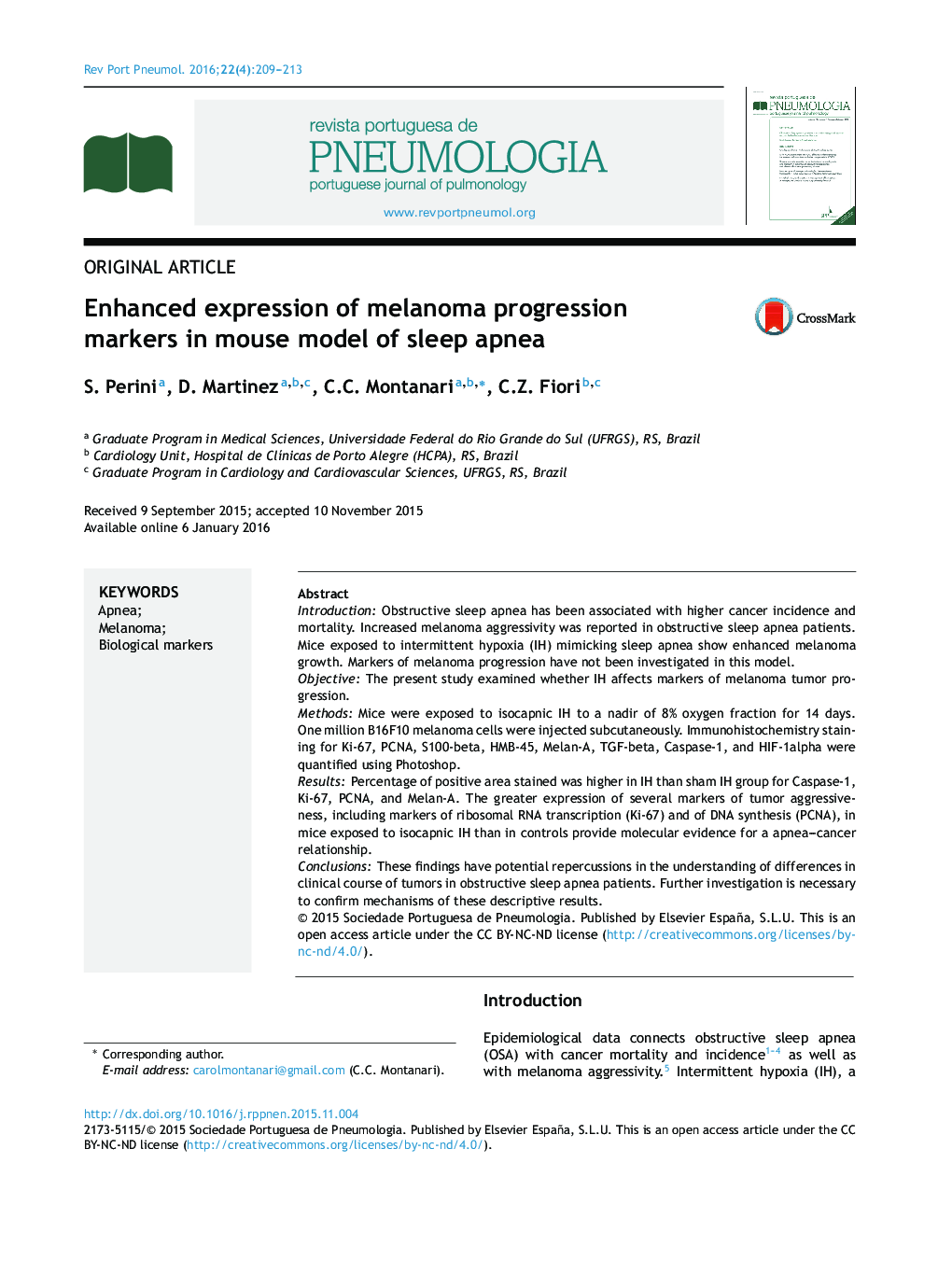| Article ID | Journal | Published Year | Pages | File Type |
|---|---|---|---|---|
| 4214570 | Revista Portuguesa de Pneumologia (English Edition) | 2016 | 5 Pages |
IntroductionObstructive sleep apnea has been associated with higher cancer incidence and mortality. Increased melanoma aggressivity was reported in obstructive sleep apnea patients. Mice exposed to intermittent hypoxia (IH) mimicking sleep apnea show enhanced melanoma growth. Markers of melanoma progression have not been investigated in this model.ObjectiveThe present study examined whether IH affects markers of melanoma tumor progression.MethodsMice were exposed to isocapnic IH to a nadir of 8% oxygen fraction for 14 days. One million B16F10 melanoma cells were injected subcutaneously. Immunohistochemistry staining for Ki-67, PCNA, S100-beta, HMB-45, Melan-A, TGF-beta, Caspase-1, and HIF-1alpha were quantified using Photoshop.ResultsPercentage of positive area stained was higher in IH than sham IH group for Caspase-1, Ki-67, PCNA, and Melan-A. The greater expression of several markers of tumor aggressiveness, including markers of ribosomal RNA transcription (Ki-67) and of DNA synthesis (PCNA), in mice exposed to isocapnic IH than in controls provide molecular evidence for a apnea–cancer relationship.ConclusionsThese findings have potential repercussions in the understanding of differences in clinical course of tumors in obstructive sleep apnea patients. Further investigation is necessary to confirm mechanisms of these descriptive results.
